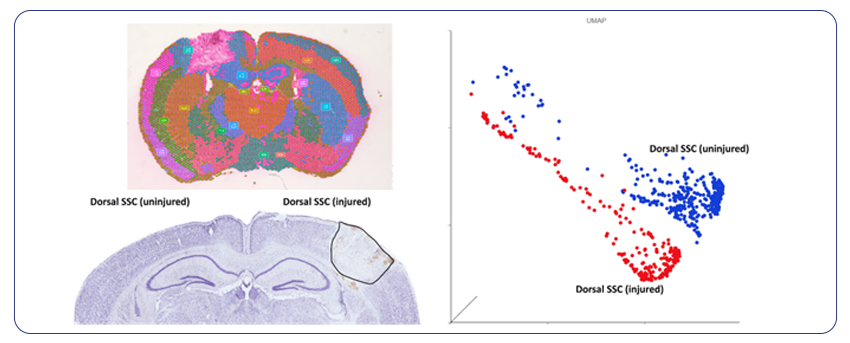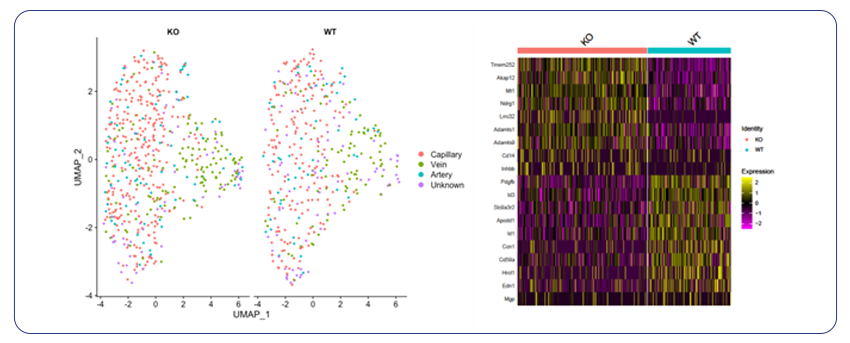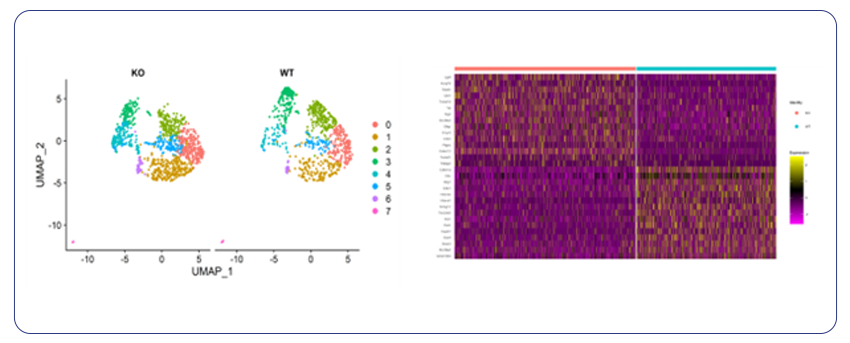By Courtney Nirenberchik, Marketing Manager, MedGenome Inc
Traumatic brain injury (TBI) poses complex challenges for researchers aiming to understand cellular responses post-injury. Professor Michelle H. Theus of Virginia Tech partnered with MedGenome to shed light on the cellular dynamics underlying injury progression and recovery on a murine TBI model using single-cell and spatial transcriptomics.
Mapping Cellular Landscapes in TBI
Through spatial transcriptomics, MedGenome’s team mapped injured and uninjured brain regions, visualizing how specific cell populations—such as astrocytes and endothelial cells—adapt within the injury site. This spatial resolution allowed for a closer look at the blood-brain barrier’s breakdown and inflammatory processes in response to trauma.

Single-Cell Precision to Decode Cellular Response
Single-cell RNA sequencing enabled high-resolution analysis of gene expression across distinct cell types. For example, astrocytes showed specific gene expression changes crucial for understanding neuroinflammation and regeneration, while insights into endothelial cells provided clues about vascular repair.
Mice model comparison
When comparing two different mice models, gene KO model vs WT, spatial data allowed the identification of physiological and cellular changes within the injured area, including changes in astrocytes and endothelial cell population.




From Data to Insight
With MedGenome’s comprehensive bioinformatics suite, each dataset became a roadmap of molecular interactions and cellular pathways, offering valuable insights for drug discovery and therapeutic advancements.
“From the genomic data—from the transcriptomic data—we were able to validate signaling at the protein level and then test therapeutically in our animal model. So, we were in a fortunate position to go from early transcriptomics all the way to testing drug therapy.” — Michelle Theus, Virginia Tech
MedGenome’s expertise in multiomics and bioinformatics is enhancing neuroscience research. By combining single-cell and spatial technologies, we’re equipping researchers with the tools to untangle complex biological responses and advance brain injury therapeutics.
Contact us to learn how single-cell and spatial transcriptomics can support your research.
#spatial transcriptomics, #Traumatic brain injury, #astrocytes and endothelial cells, #gene expression, #single-cell RNA sequencing, #multiomics
 US
US IN
IN

